Caulerpa - Bay of Islands areas closed to anchoring and fishing
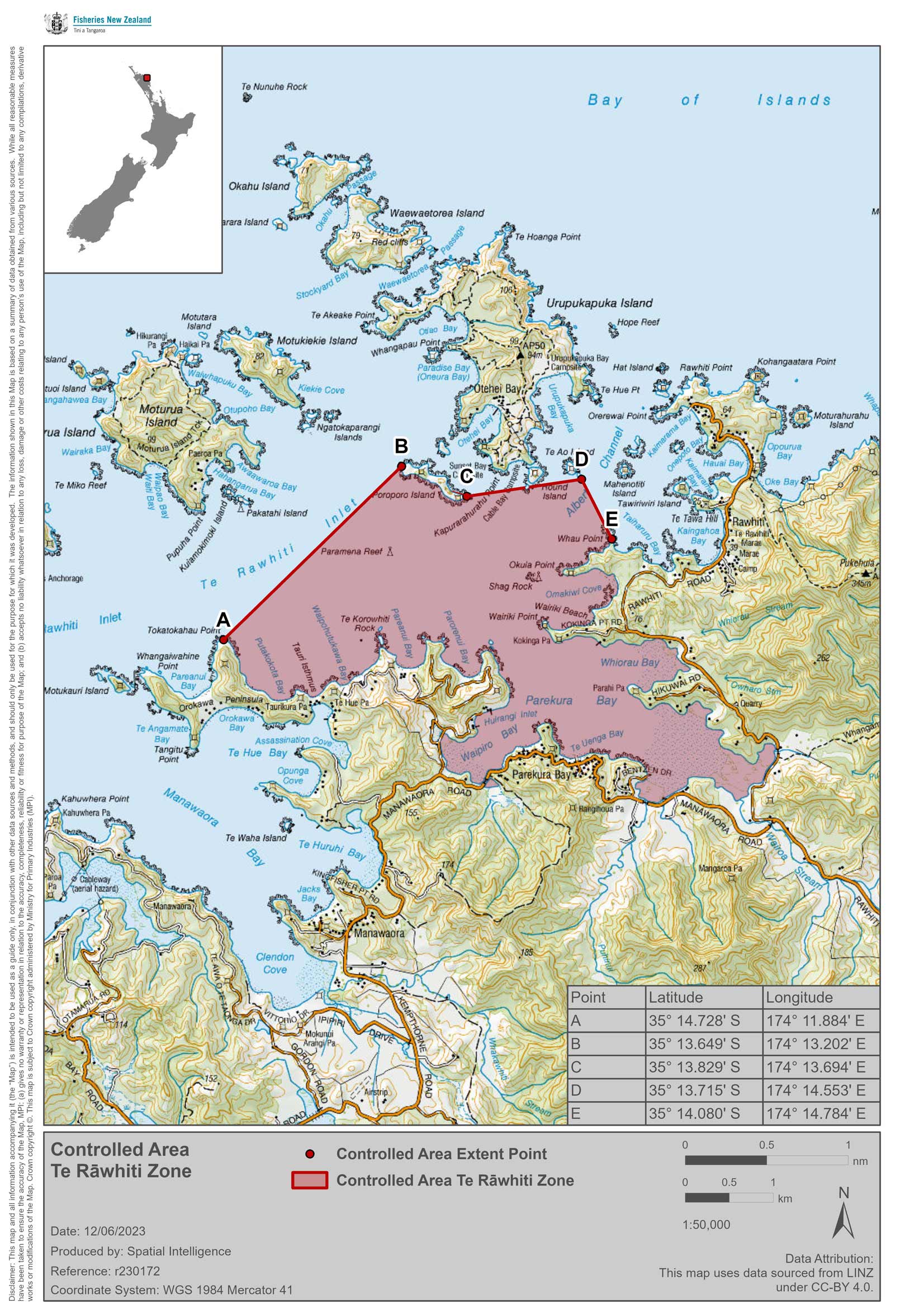 It is illegal to fish or anchor a vessel in a defined area (refer to the map) of Te Rāwhiti Inlet.
It is illegal to fish or anchor a vessel in a defined area (refer to the map) of Te Rāwhiti Inlet.
The area under controls is bounded by Whau Point, the south-eastern tip of Te Ao Island, the eastern shoreline of Poroporo Island and the northern tip of Tokatokahau Point up to the high-tide area.
Under the CAN, it is illegal to remove any marine life (including fish, shellfish, koura (crayfish) or seaweed from the zone. This means any form of fishing is banned. This includes spearfishing, crayfishing, kina and other shellfish gathering, net fishing and drift fishing from any kind of vessel.
Reversing the decline
 The Bay of Islands sparkles on the surface, but underneath life is in trouble. The teeming marine life that greeted past generations is a shadow of its former self. There are many things we can do to reverse the decline. Let's make changes on the water and on land that will help to rebuild what we love. Future generations must be able to enjoy Tangaroa's abundance.
The Bay of Islands sparkles on the surface, but underneath life is in trouble. The teeming marine life that greeted past generations is a shadow of its former self. There are many things we can do to reverse the decline. Let's make changes on the water and on land that will help to rebuild what we love. Future generations must be able to enjoy Tangaroa's abundance.
Some of the marine protection tools that can start to reverse the decline:
No-take areas deliver
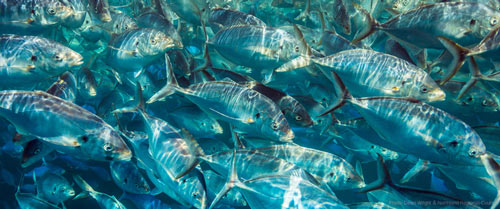
Like we are already beginning to see in the Maunganui Bay rahui, no-take areas are the quickest way to enable marine life to thrive - for recovery, spillover, education, science, tourism and a fantastic snorkelling exprience!
No-take areas boost reproduction
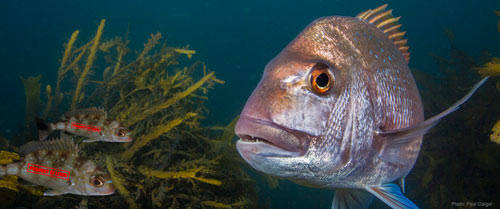
New research confirms adult snapper in the Leigh Marine Reserve boost snapper abundance in surrounding waters. This small marine reserve is punching well above its weight, contributing 10% of juvenile snapper between the Hen and Chicks and Whangaparoa.
Kaitiakitanga
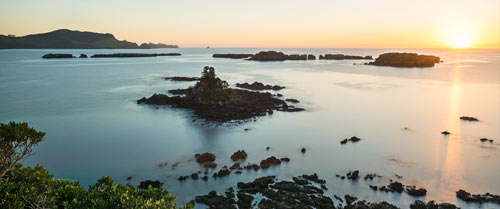
Hapu can lead they way using tools in the Customary Fisheries Legislation to rebuild local fish stocks. Ngati Kuta and Patukeha have done this well with the Maunganui Bay Rahui. Ngā Hapū o Taiamai ki Te Marangi established the 20 sq km Te Puna Mātaitai which excludes commercial fishing. We look forward to the kaitiaki setting bylaws to manage the recreational fishing in this area.
Manage for more fish
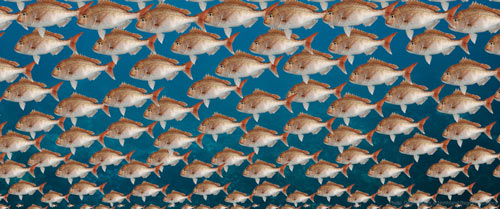
Let’s choose to manage our fisheries to have more fish in the sea. Historically NZ's fisheries management decisions have been based on trying to keep fish stocks at just 20% of natural abundance. Managing for 50% natural abundance would mean more fish, bigger fish.
Sedimentation is a killer
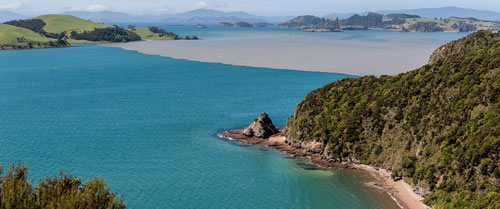
Things we do on land affects the amount of fish in the sea. Loss of sediment-trapping wetlands means 500,000 tonnes of silt surges down our rivers and out into the Bay of Islands each year. It's a silent killer smothering shellfish beds and kelp forests, and turning rock seabeds to mud.
Keep marine pests out

Like possums and stoats on land, marine pests have huge potential to wreak havoc on our native marine life. Let's keep them out of the Bay of Islands!
Voluntary fishing accord
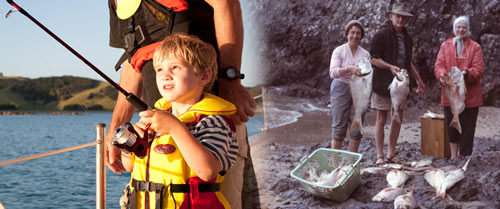
Our ever increasing population and technology has put enormous pressure on fish stocks in the Bay of Islands. This is our new reality. Here's some simple actions all of us who fish can take to conserve our stocks.
Dolphins in distress

We're loving them to death! In the Bay of Islands 75% of calves die before reaching adulthood...

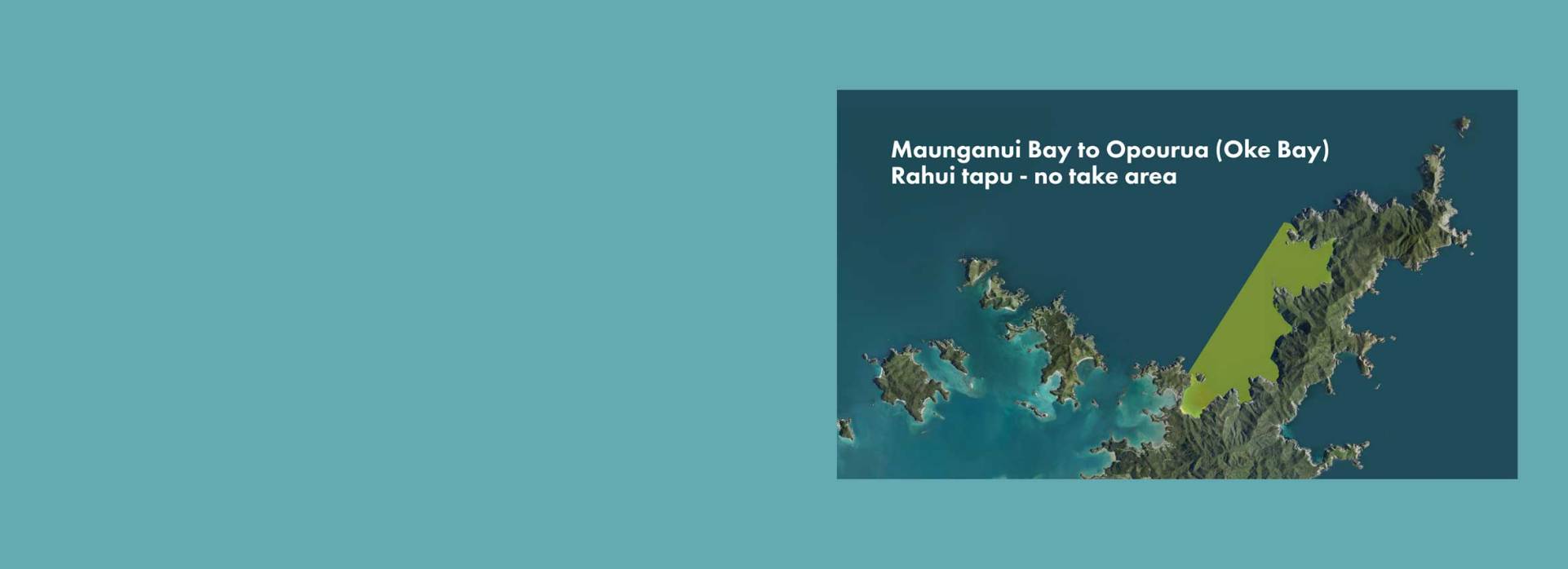

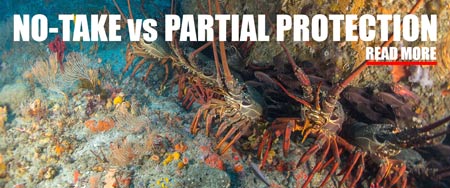
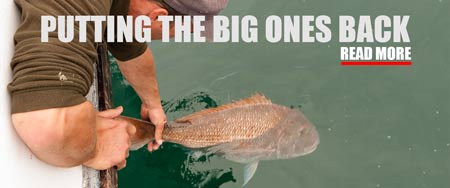
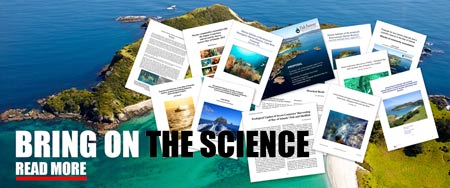
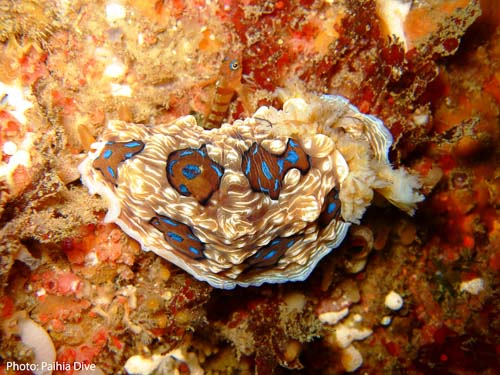 All of us with an interest and love of Tangaroa, let's work together and take on the challenge of marine protection for the Bay.
All of us with an interest and love of Tangaroa, let's work together and take on the challenge of marine protection for the Bay.